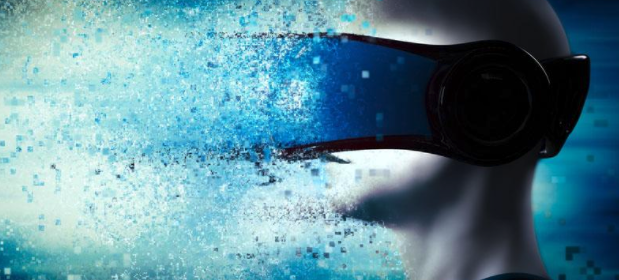
Fact, Fiction, or Future: Ready Player One
“This...this isn’t real?” - Neo to Morpheus, "The Matrix"
Article Header
« Return to Main PageFact, Fiction, or Future: Ready Player One
“This...this isn’t real?” - Neo to Morpheus, "The Matrix"
Introduction
Ever since the printing of the first novel, authors have imagined vast, impossible worlds filled with a myriad of fascinating characters. For many years these creations resided only in the minds of readers. Then came the question: Could these worlds be made real? Not just real to the mind of the reader, but a literal world you could feel and enjoy? A whole new topic began to make its way into science fiction: virtual reality. Soon novels, films, and videogames began to explore the concept of what such a virtual world could be like and what consequences it could hold.
Among the more famous examples is the film trilogy The Matrix. In it, humanity is born into and lives in a complex simulation called The Matrix. The protagonist, a hacker who goes by the name Neo, is offered an unusual choice: a blue pill or a red pill. If he takes the blue pill, he will simply forget everything that has happened to him over the course of the story and remain in the virtual world. However, if he takes the red pill, he will leave The Matrix and return to the real world. The idea of becoming lost in a virtual world has become a common theme in science fiction. Recently, a newer title called Ready Player One has been making waves in the VR community. Ready Player One describes a future where almost everyone plays in a massive MMORPG (Massive Multiplayer Online Role Playing Game) called OASIS. The players interact with the virtual world using a variety of gaming devices.
Ready Player One is one of the most accurate representations of virtual reality ever displayed in fiction. This article represents a brief overview of several of the projects being worked on by various innovators. It will also show just how unnervingly accurate the novel is.
The Headset

Courtesy of Oculus
When one thinks of virtual reality, the first image that comes to mind is the headset. The design began with science fiction and inspired innovators to push the limits of current technology. However, for many years a workable and economic device remained fiction. Various prototypes were made but they suffered from bulkiness, extreme video lag, and high costs. A new model was needed. On June 14, 2012, Palmer Lucky, an amateur electronics designer, showcased his invention – The Oculus – to a group of investors. They had only one response, “Wow” (Clark, [1]). Palmer had created the first version of what would become known as the Oculus Rift.
This, in turn, would spark a new revolution in entertainment that is still ongoing. (You can read the full story of Lucky at this link.) Ready Player One features a similar headset. However, the way the display is created is different. In the novel, the headset uses lasers to project an image onto the wearer’s eyes. In real life, the Oculus uses two high resolution OLED (Organic Light-emitting Diode) screens to create a lifelike virtual environment. Both headsets, fictional and real accomplish the same goal: immersion. Oculus Rift and its successors began the trend to give the wearer a more indepth world. However, for some, this barely scratches the surface.
The Suit

Courtesy of Teslasuit
What is the next level of virtual reality? How about full manipulation of the virtual environment? Science fiction often portrays VR equipment as only being a headset linked to the brain. However, while brain computer interfaces have been created, implanting electrodes into the brain is dangerous (for obvious reasons). In reality, the gamer of the future would want to have an indirect connection to the brain. “Crude versions [of this] do exist. Picking up information from the brain would probably use a more advanced version of an EEG (electroencephalograph), which uses a set of electrodes attached to the scalp (or just resting on the head in a cap) to detect signals from within the brain” (Clegg, 22). The signals the cap looks for are the electrical pulses made each time a person has a thought. For now, simply plugging your brain into a wall will remain science fiction. However, the current limit of technology has not deterred several innovators from attempting the next best thing. Enter the Teslasuit….
The Teslasuit is a full body haptic feedback suit. “The advanced haptic element recreates the sensation of touch and simulates the feeling of the weight of objects in a virtual world” (Demidenko, [1]). The suit does this using a technique called electrotactile feedback; a computer sends electrical pulses to various places on the body. Depending on the amount, strength, and area of the pulse, different sensations can be replicated with no moving parts. This concept is based on proven research that is more often used in physical fitness training. Along with feedback units, the suit uses motion sensors to track the body. This simply means, if a person moves their hand in the real world, their virtual hand will also move. This may seem like common sense but until recently such technology was rare due to expense. The suit is also able to replicate temperature. This can be anything from an ice cold wind to a fiery volcano (not to the point of injury of course).
The suits in Ready Player One work almost exactly like this. It even parallels real life by explaining only wealthy individuals or very involved gamers are able to purchase the full body systems. This is the case today. So now a virtual environment can be seen and felt, what’s left? Treadmill, anyone?
The Walk

Courtesy of Thinglink
Now before the gamer reading this article leaves because it seems to mention exercise, something needs to be clarified: this is not a normal treadmill. Even with full body feedback, the gamer is still standing in a room. Rooms have boundaries. Enter Virtuix’s Omni. “The Omni enables players to explore endless VR worlds, moving freely and at full speed in 360° without hitting any walls. Movements that would otherwise require unintuitive button presses are now the result of natural motion – simply walk, run, and turn in 360° in virtual reality games and applications!” (“ABOUT VIRTUIX,” [1]) This is the final step of immersion. Now the user is able to see, feel, and literally walk through a virtual world.
Ready Player One combines these three devices and several more to envelop its characters in a virtual world nearly indistinguishable from the real one. As previously mentioned, only wealthy individuals, corporations, or professional gamers used all these systems at once. The combination of technologies is another aspect the novel gets right. The indepth virtual reality sought by science fiction readers will not be one system. It will combine many different designs. As shown, this is not impossible. In fact, each piece of technology exists today! If you have money or are a developer, you can do this right now. While not all of these technologies are as readily accessible to the public, innovator's continue building, testing, and developing exciting new devices to deepen the reality of the virtual.
Conclusion
Throughout this article, exciting new developments have been explored and examined. However, in all this excitement, one thing must not be neglected: Does the Bible have anything to say about it? Before you attempt to look up the words Oculus Rift in your King James, let me stop you and save you the trouble. You will not find it. Words like haptic feedback or omnidirectional were unknown to the writers of scripture two thousand years ago. However, this does not mean the Bible has nothing to say on the concept.
The primary reason for humanity's existence in the first place is found in Isaiah 43:7. In it, the writer explains God created us for His glory that we may glorify Him in all we do. I have one question: Do you glorify God in your entertainment? Video Games and virtual reality count under this. This question also ties in to Ephesians 5:16 where Paul talks about redeeming the time and using it wisely. Does this mean that we should never play games or come up with imaginary worlds? No, but the focus of life must always be directed on God's plan.
In the book of Ecclesiastes Chapter 3, the author, Solomon, says this, “I know that there is no good in them, but for a man to rejoice, and to do good in his life. And also that every man should eat and drink, and enjoy the good of all his labour, it is the gift of God.” Even though playing video games or using virtual reality does not matter towards eternity, God has given us the ability to enjoy it. Instead of avoiding it or abusing it, we need to look at it the way God does: a gift. If we do, this will produce a thankfulness to God and a joy in the moment.
God has given humanity many gifts in the form of technology. Virtual reality is another way humans express God’s image through creativity. Remember, no matter what you are doing, do all to God’s glory. So I have one final question: Red pill or Blue pill?
Works Cited:
Clegg, Brian. Ten Billion Tomorrows. St. Martin's Press, 2015.
Clark, Taylor. “How Palmer Luckey Created Oculus Rift.” https://www.smithsonianmag.com, SMITHSONIAN MAGAZINE, Nov. 2014.
Demidenko, Anna. “Teslasuit Project Announces the First Full Body Haptic Suit with Motion Capture and Climate Control.” https://Teslasuit.io, Teslasuit, 14 Dec. 2017.
“ABOUT VIRTUIX.” http://www.virtuix.com, Virtuix, 2018.
Header Image Courtesy of RDMag









